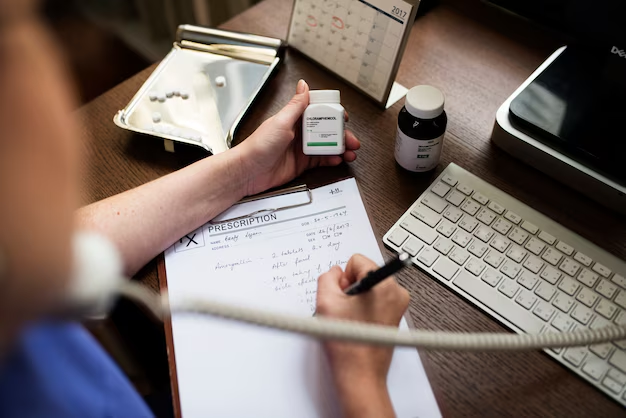Understanding Medicare Part B: Will It Cover Your Prescriptions?
Navigating the world of health insurance can often feel like untangling a web of complex information, especially when it comes to understanding what different parts of Medicare cover. A common question that arises is: Does Medicare Part B cover prescriptions? If you find yourself pondering this, you're certainly not alone. Getting clear on what Medicare Part B will and won't cover is essential for effectively managing your health care.
The Scoop on Medicare Part B and Prescription Coverage
Medicare Part B is known primarily for covering outpatient services, including visits to doctors, outpatient medical services, preventive services, and certain forms of durable medical equipment. However, when it comes to prescription drugs, Medicare Part B is not your go-to solution for the majority of routine medications. Instead, prescription drug coverage is usually offered through Medicare Part D or a Medicare Advantage Plan with drug coverage included.
Nevertheless, there are specific instances where Medicare Part B will cover certain medications, primarily those administered in a clinical setting. These include:
- Chemotherapy drugs: Part B covers some cancer-treating drugs if they're given intravenously in a doctor's office or clinic.
- Injectable and infused drugs: Part B may cover these as long as they are deemed medically necessary by a healthcare provider, and they are infused or injected at a medical facility.
- Some vaccinations: For example, the flu shot, pneumonia vaccines, and hepatitis B shots for high-risk patients.
Beyond Part B: Exploring Your Prescription Drug Options
If you rely on regular prescriptions that fall outside the narrow scope of what Part B covers, it's beneficial to explore the other parts of Medicare that handle medication costs more comprehensively.
Medicare Part D: This standalone plan covers prescription drugs you take at home. It's designed to offer options ranging from minimal to extensive drug coverage, making it crucial to assess your medication needs carefully when choosing a plan.
Medicare Advantage Plans (Part C): Many of these plans include prescription drug coverage. They can be a more comprehensive solution but often come with network restrictions on providers and pharmacies.
Discovering Financial Assistance Options
Healthcare costs and prescription medications can impose a significant financial burden, especially without comprehensive insurance coverage. But all is not lost—various financial assistance programs can offer a lifeline:
Extra Help: This program aids those with limited income and resources in paying for Part D prescription drugs. It can considerably reduce co-pays and deductibles.
State Pharmaceutical Assistance Programs (SPAPs): Many states offer these programs, which work with Medicare drug plans to lower drug costs for residents in need.
Prescription Drug Discount Programs: Available through various national and local initiatives, these programs provide discounts on medications for both insured and uninsured individuals.
For those looking beyond healthcare assistance, financial relief can also be found in other avenues:
- Government Aid Programs: From rent assistance to food benefits, these programs can help alleviate broader financial strains.
- Debt Relief Solutions: Options for consolidating or settling debts can lighten the load for those battling financial hardship.
- Educational Grants: Scholarship and grant programs can ease the burden of educational costs for you or your dependents.
Taking proactive steps by exploring these resources can help manage both healthcare expenses and broader financial challenges.
Unlocking Assistance Programs and Solutions:
- 💊 Medicare Part D: Dedicated drug plans to ensure medication costs are affordable.
- 🤝 Extra Help: Available for eligible low-income individuals to aid with drug expenses.
- 🌍 State Pharmaceutical Assistance: Programs tailored by states for further support.
- 📉 Debt Relief Options: Measures to manage and reduce overall debt efficiently.
- 🎓 Educational Grants: Financial support for pursuing higher education opportunities.
- 🏡 Government Aid Programs: Includes schemes like rent and food assistance to maintain a stable living situation.
By truly understanding your options, you can take charge of your health and finances, ensuring you're not only covered today but prepared for tomorrow.

Related Topics
- Am I Elgible For Medicare
- Am I Enrolled In Medicare
- Am I Qualified For Medicare
- Are Adult Diapers Covered By Medicare
- Are Chemotherapy Drugs Covered By Medicare Part d
- Are Colonoscopies Covered By Medicare
- Are Covid Tests Covered By Medicare
- Are Cpap Machines Covered By Medicare
- Are Cpap Supplies Covered By Medicare
- Are Dental Implants Covered By Medicare